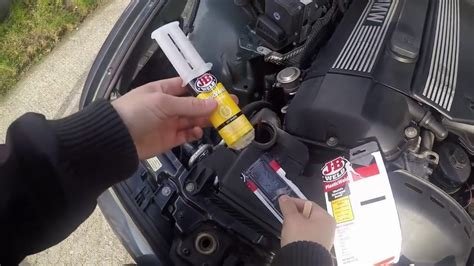Learn how to fix a radiator leak, stop a leaking radiator, and patch a radiator leak with these simple DIY solutions. Keep your home warm and dry.Are you dealing with a radiator leak and not sure what to do? A leaking radiator can be a frustrating and worrisome problem, but with the right knowledge and tools, it’s a problem that can be easily fixed. In this blog post, we will cover everything you need to know about repairing a radiator leak. From identifying the source of the leak to learning how to stop it and patch it up, we’ve got you covered. Whether you’re a DIY enthusiast or just looking to save some money on costly repairs, this guide will walk you through the steps to fix a radiator leak and get your car back on the road in no time. So, if you’re ready to tackle this issue head-on, keep reading to learn how to fix a radiator leak.
How To Fix A Radiator Leak
If you’ve noticed that your radiator is leaking, it’s important to take action quickly to prevent further damage to your car and costly repairs. Fixing a radiator leak is not as daunting as it may seem, and with the proper tools and know-how, you can tackle this problem on your own. The first step is to identify the source of the leak. Look for any visible cracks, holes, or damage to the radiator. Once you have located the leak, you can move on to the next steps.
One of the most common methods for fixing a radiator leak is to use a radiator patch kit. These kits typically include everything you need to patch up the leak, including a putty or epoxy that can be applied directly to the damaged area. Simply follow the instructions included with the kit to apply the patch, and be sure to allow ample time for it to dry and seal properly. In some cases, you may need to replace a damaged hose or component to fully fix the leak. If you’re unsure about how to proceed, it’s always best to consult with a professional mechanic for guidance.
How To Stop A Leaking Radiator
When it comes to dealing with a leaking radiator, it’s important to act quickly in order to prevent further damage and potential safety hazards. One of the first steps in stopping a leaking radiator is to identify the source of the leak. This can often be done by examining the radiator for any visible cracks, corrosion, or loose fittings. Once the source of the leak has been identified, it’s important to turn off the radiator to prevent further leaking and to allow it to cool down before attempting any repairs.
After the radiator has been turned off and cooled down, the next step is to apply a sealant to the source of the leak. There are various types of sealants available, such as epoxy putty or radiator sealant, that can be used to effectively patch up the leak and prevent any further leaking. It’s important to follow the manufacturer’s instructions when applying the sealant and to ensure that the area is clean and dry before application. Once the sealant has been applied, it’s important to allow it to dry completely before turning the radiator back on to ensure that the leak has been properly repaired.
How To Patch A Radiator Leak
When it comes to dealing with a leaking radiator, it’s important to address the issue as soon as possible to prevent further damage to your vehicle. One of the ways to stop a radiator leak is by patching it up. First, you will need to identify the source of the leak. This can be done by checking for any visible cracks or holes in the radiator. Once you have located the leak, you can begin the patching process.
One method for patching a radiator leak is to use a commercial radiator sealant. These sealants are designed to temporarily block small leaks and can be easily poured into the radiator. Another option is to use a radiator patch kit, which typically includes a patching material and adhesive. To apply the patch, clean the area around the leak and follow the instructions provided with the kit. Once the patch is applied, allow it to dry completely before refilling the radiator with coolant. Remember to regularly check the patched area to ensure that the leak has been successfully repaired.
